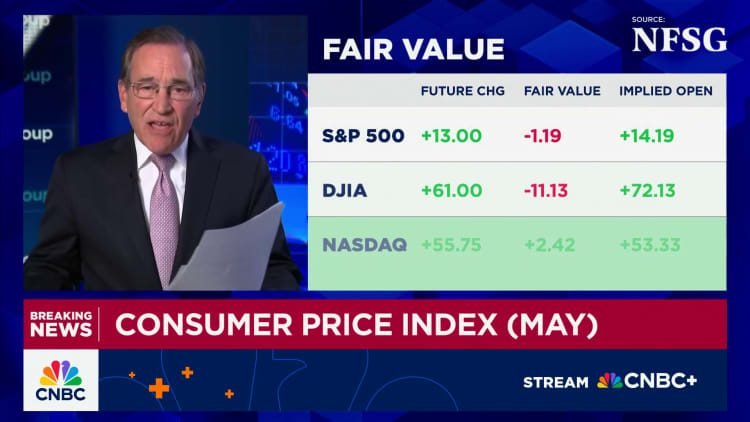U.S. Consumer Prices See Minor Increase in May
In May, U.S. consumer prices increased slightly, according to the latest report from the Bureau of Labor Statistics. The modest rise in prices indicates that tariffs imposed by the Trump administration have yet to significantly affect inflation levels.
Overview of Inflation Data
The Consumer Price Index (CPI), a comprehensive measure of the cost of goods and services in the U.S. economy, rose by just 0.1% in May. This brings the annual inflation rate to 2.4%, aligning with expectations from economists who had predicted a 0.2% monthly increase and a 2.4% year-over-year rate.
When factoring out the volatile categories of food and energy, the core CPI also recorded a modest increase of 0.1%, yielding an annual rate of 2.8%. Predictions for the core inflation were set at 0.3% month-over-month and 2.9% year-over-year, indicating that overall inflationary pressures might not be as severe as some experts anticipated.
Energy Prices Decline
A notable contributor to the lower-than-expected inflation rate is the continued decrease in energy prices, which fell by 1% over the month. Gasoline prices alone saw a 2.6% drop, bringing the year-over-year decline to a significant 12%. In contrast, food prices edged up by 0.3%, driven primarily by housing costs, which were identified as the "primary factor" for the overall CPI increase. Although prices for eggs decreased by 2.7%, they remain 41.5% higher compared to the previous year.
Other sectors witnessed declines as well; used vehicle prices dropped by 0.5%, while new vehicle prices fell by 0.3%. Despite an increase in shelter costs, the annual growth rate for these prices has slowed to 3.9%, the lowest since late 2021.
Real Earnings Show Slight Growth
The modest inflation data suggests a positive trend for real earnings, which increased by 0.3% in May and are up 1.4% compared to last year. Experts like Seema Shah from Principal Asset Management acknowledge that while the inflation figures are reassuring, the long-term effects of tariff-related price changes may not emerge for some months.
Following the release of this report, futures for the stock market turned positive, while Treasury yields declined, indicating a cautious optimism among investors.
Ongoing Trade Tensions
This report arrives as trade negotiations continue under the Trump administration. Following a significant announcement in April regarding universal tariffs on U.S. imports, the administration has been engaged in discussions with Chinese officials to address ongoing trade conflicts. Key areas under negotiation include rare earth materials essential for automotive batteries and technology products.
Despite the broad implementation of tariffs, White House officials have expressed confidence that these measures will not lead to runaway inflation, positing that foreign manufacturers would likely absorb much of the cost. However, many economists caution that these tariffs could result in more pronounced long-term price increases.
Implications of Data Collection Changes
The evaluation of inflation data has been complicated by recent initiatives from the administration aimed at reducing the federal workforce. This has included a hiring freeze at the Bureau of Labor Statistics and a shift towards a method called imputation, where models are used to fill gaps in data collection. This change has raised concerns among analysts about potential volatility in the data.
While the Bureau has stated that these changes will have a minimal impact overall, they may influence specific subindexes. As of April, the Bureau began reducing its sampling in various regions, including locations like Lincoln, Nebraska, and Buffalo, New York.
In summary, while the latest inflation figures indicate a slight upward movement, the underlying factors such as energy prices and ongoing trade negotiations shape the economic landscape as the administration seeks to navigate these complex issues.
